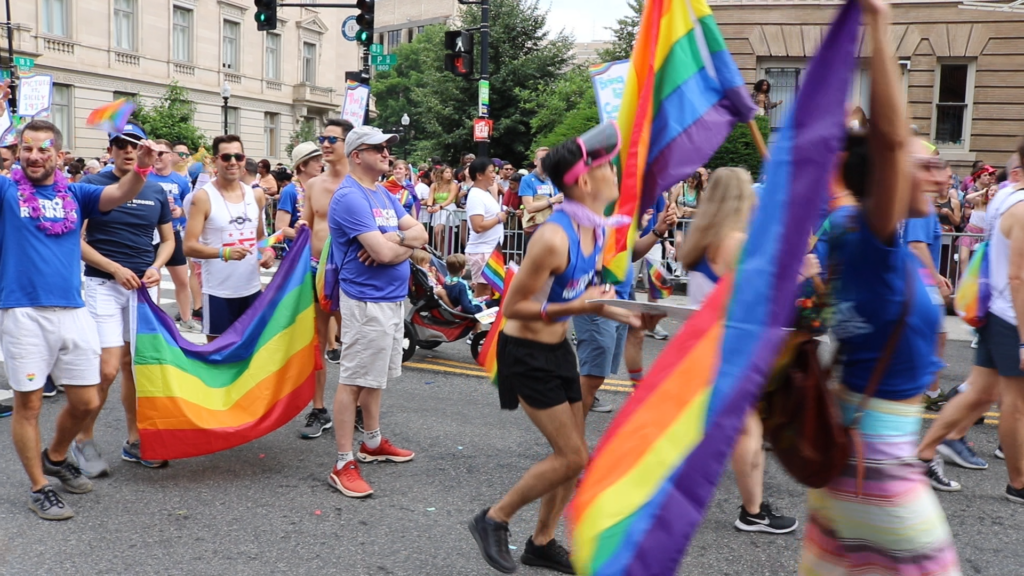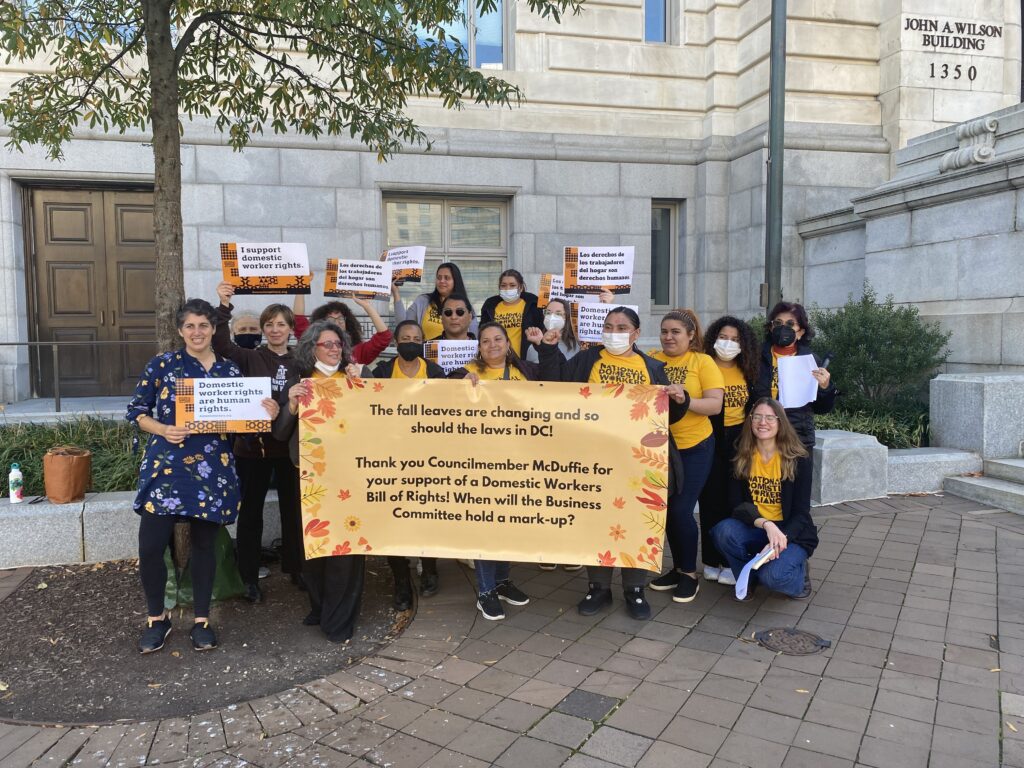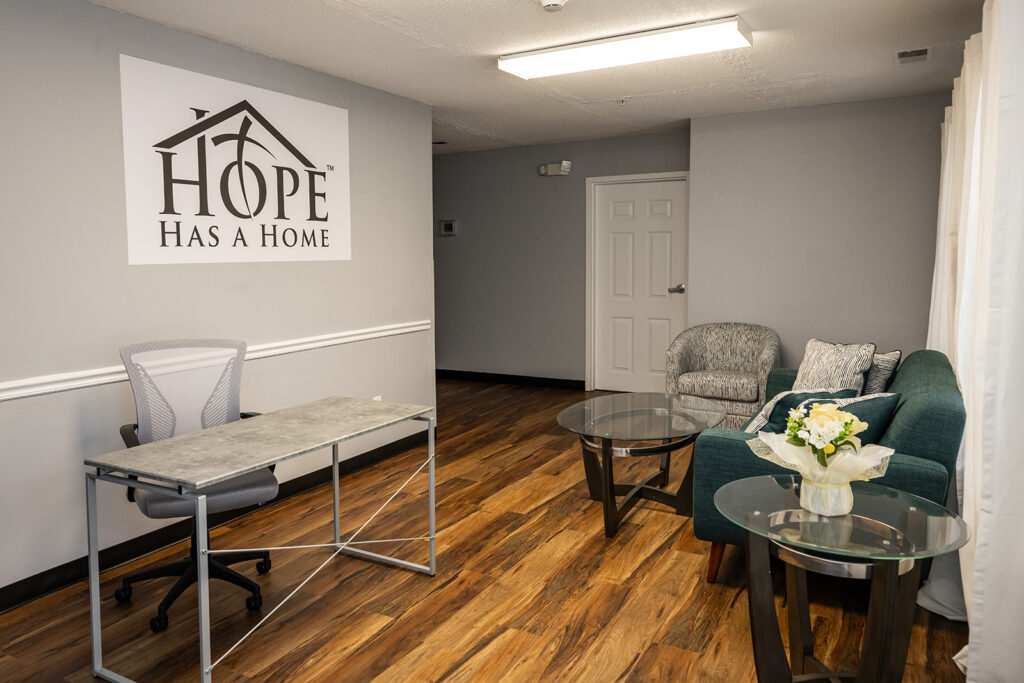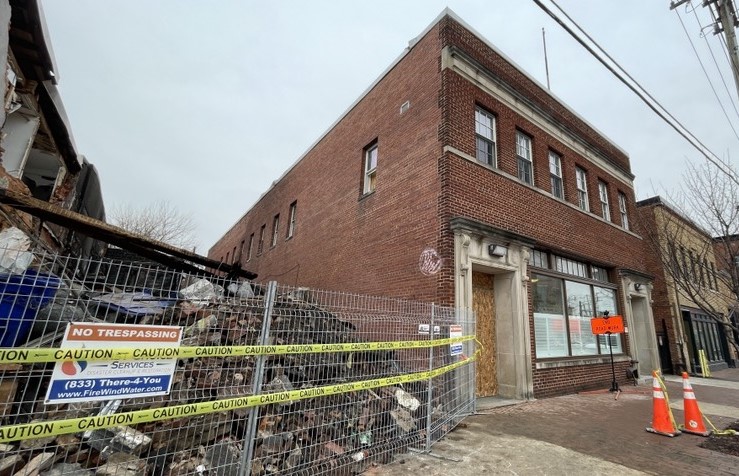O
livia Rodriguez-Nunez still remembers dancing around in a jumper at the age of 4. If she undid the buttons on the side, it felt like she was wearing a dress. The thrill that thought gave her — commonly called gender euphoria — was one of the first sparks of joy she felt as part of her queer identity.
“Being trans and being queer, it’s like a whole unique experience of figuring out who you are, something new you always learn about yourself,” said Rodriguez-Nunez, now 25. “I couldn’t even imagine transitioning — and now here we are.”
Rodriguez-Nunez’s identity as a trans female has brought her a lot of joy — like when she cut her hair into a bob during quarantine. She looked in the mirror of her hotel room and told herself, “Oh my god, that’s Olivia. For the first time, that’s Olivia.” But the joy of queer youth is often met by intolerance, homophobia and hatred from the world around them. Parts of Rodriguez-Nunez’s family rejected her, just as thousands of families have rejected other queer youth around the country. The result of this rejection is often homelessness.
Queer and transgender youth are vastly overrepresented in the unhoused population. Nationally, 7% of people between 13 and 25 identify as LGBTQ, while 40% of unhoused people of those same ages do. D.C.’s most recent Youth Count, which surveys the number of youth experiencing homelessness and housing instability, reports that the same is true in the District, with 40% of youth experiencing homelessness identifying as LGBTQ.
While D.C.’s Pride celebrations bring added attention to LGBTQ issues each June, service providers and young people say queer unhoused youth need more support year-round from their city and community to find sustainable housing and employment so they can celebrate the joy they find in their identities.
The link between queer youth and homelessness
For Rodriguez-Nunez, fully coming into her trans identity was a 20-year project. She recalls gravitating to the stereotypical girly things growing up; she wanted Barbies and dolls, and everything pink. She began to suspect she was transgender in middle school, after she met another kid who was feminine in the same ways she was. But for years, she buried that feeling in work, distracting herself to dismiss what she was starting to feel.
But then, in 2020, Rodriguez-Nunez noticed she had begun to feel sad most of the time. She only felt happy if she was wearing makeup or a wig — in glam, as she says.
“It came to the point where I didn’t want to be seen without it,” she said.
When Rodriguez-Nunez decided to transition soon after that, she was living in her family’s home with her siblings. At first, they seemed supportive, but as Rodriguez-Nunez’s transition progressed, her sister’s reaction changed. The two of them began fighting frequently, she said, and her sister would berate her with slurs.
“There was so much hate and so much anger,” she said. “It just became a moment where like, it wasn’t safe anymore.”
Forced out, she began experiencing housing instability and homelessness.
Rodriguez-Nunez isn’t alone. LGBTQ youth most often experience homelessness due to severe homophobia and transphobia in their previous living situation. According to a report by national nonprofit True Colors United, around 80% of queer youth experiencing homelessness were forced out of their home or felt pressured to run away. Among the respondents, 40% said they experienced other problems at home, and 30% had been abused by their family. Providers worry these numbers will increase as multiple states pass a preponderance of anti-queer legislation.
While these are numbers from a national survey, they line up with what providers have seen in D.C. — a lack of acceptance drives homelessness.
“It’s the abandonment that takes place by living in their authentic truth. It is the violence they face by their gender expressions or people they love. It is the need for refuge,” said Monroe Poston, the residential coordinator for Covenant’s SHINE program, which provides housing and case management to 24 unhoused LGTBQ youth in the District with funding from the D.C. government.
Discrimination isn’t the only reason queer youth experience homelessness — aging out of the foster care system and family poverty are also common reasons — but it can make securing housing and employment much harder. This is especially true for LGBTQ young people of color, nearly half of whom report that discrimination has affected their ability to find housing.
Once they’re unhoused, everything becomes harder for queer youth: It’s difficult to hold down a job without steady housing, affirming hormone services feel out of reach, and there’s little familial or community support. This hits youth who already were poor or had few resources hardest, according to Elly Bludworth, the director of youth housing at D.C. nonprofit SMYAL.
“Any 18-year-old is usually not prepared to go out and get their own apartment,” Bludworth said. “But then the perpetual discrimination they experience even after that only exacerbates the issues.”
Meeting the needs of queer youth
After leaving her family’s house, Rodriguez-Nunez bounced around for a bit, generally staying with her then-boyfriend. But eventually, she was out of options and turned to Casa Ruby, an LGTBQ services organization that then operated a low-barrier shelter in D.C., though the shelter was forced to close in 2021 due to a loss of city funding.
Rodriguez-Nunez said she had heard years before about the shelter but had never thought about the possibility she’d have to go herself. She cried herself to sleep every night the first week. But soon she found happiness being around people who understood; she said she felt like a kid while she was staying at Casa Ruby. The residents knew what everyone else was going through and could support each other.
“It was like a cute little family,” Rodriguez-Nunez said.
Queer-specific shelters can be a lifeline for youth, according to experts. LGBTQ people experiencing homelessness routinely face violence in shelters that are not specifically designed for them, including abuse, attacks, intentional misgendering and hate crimes, Poston said. It’s this discrimination that has led several community organizations, including Covenant House, to create LGBTQ youth-specific housing programs. In SHINE’s first year, youth have filled more than half the beds each day, and Poston believes there’s even more need than current operators can fill.
The number of queer- and trans-specific shelter beds in D.C. has increased in recent years, which providers attribute to growing demand. SMYAL, an organization devoted to meeting the needs of queer youth, has opened three housing programs in the last five years. Despite having closed its low-barrier shelter, Casa Ruby provides short-term and transitional housing for LGBTQ youth. The Wanda Alston Foundation also provides transitional housing, where Rodriguez-Nunez is now staying.
Some city-provided housing vouchers are also set aside for LGBTQ individuals, including 20 new Local Rent Supplement Program vouchers in the District’s fiscal year 2023 budget. The city is in the midst of developing its first LGBTQ adult shelter for ages 25 and older. Queer-specific programs are not just protection from discrimination, Poston said, but can be affirming and empowering spaces — particularly for youth who may never have been able to show their gender or sexuality at home before.
“It is a safe haven; it is a beacon of hope; it is a place where LGBTQIA youth can come and be free of misgendering, free of discrimination, and be able to get the services and support that they need,” said Poston, a longtime trans activist in D.C. “It’s the equity, it’s the inclusion, it’s the representation, it’s the feelings of welcome.”
What’s left to do
Not all of the local LGBTQ-focused housing programs are idyllic. Rodriguez-Nunez said she didn’t always feel safe in shelters and transitional housing, and living with so many other people often led to fights. At one point, another resident destroyed all of her possessions. This led her to start looking for more permanent housing. After being let down by several promising programs, she’s hoping the apartment application she submitted this month will be the final step.
Providers and youth also say more housing programs are needed. Bludworth, from SMYAL, gets emails from young people all over the country looking for housing in D.C. One specific program she’d like to see is a housing service focused on mental health and other medical needs. A lot of young people come into SMYAL’s programs with trauma, she said, but the organization has a limited ability to help them. SMYAL can’t provide medication, for instance, or make sure residents take it.
“A lot of them have not had access to quality medical and psychiatric care for most of their life,” Bludworth said.
More than a quarter of transgender and gender non-conforming youth experiencing homelessness nationally report needing help with transition surgery and other gender expression services. Rodriguez-Nunez decried the price of hormone replacement therapy, which can cost up to $2,400 annually without insurance. Around 15% of all LGBTQ youth say they need assistance with health care, and providers report that many youth have unmet needs in terms of their mental and physical health after years of being refused appropriate treatment because of a lack of parental consent.
Rodriguez-Nunez is also hoping that more housing programs will incorporate classes and workshops into their lineups. This year, a coalition came together to call on the city to create an employment program specifically for LGBTQ youth experiencing homelessness, who say current options are not accessible to them. Queer youth often have rejection-related trauma that can be triggered by discrimination and derogatory comments made in the workplace.
SHUGG’s Place at Damien Ministries currently runs a program for transgender and gender non-conforming youth experiencing homelessness that has been a success, according to Gabrielle “Gibby” Thomas, the group’s director. But the program has limited slots and isn’t open to LGBTQ youth who don’t identify as trans or gender non-conforming, causing advocates to call for the program to be expanded. The D.C. Council did not fund a queer-youth-specific workforce program this year.
“LGBTQ youth who are experiencing homelessness never have a fair chance to have those practical needs met or to have things that will make them successful — the things that will allow them to express themselves and live in their authentic identities,” Poston said.
Bringing Pride to every month
Despite everything, queer youth in D.C., including those who are unhoused, have been celebrating throughout June.
This year, Covenant House took residents to the Capital Pride Parade and held a cookout in its service center. SMYAL’s housing services have been celebrating Pride all month long, Bludworth said. One young trans woman was finally able to get her name legally changed, and everyone joined in on the festivities.
“It’s like Pride every month here, though, to be honest,” Bludworth said.
Rodriguez-Nunez found particular joy in her tasks at work over the past month. An employee at a nonprofit that provides the LGBTQ community with testing for sexually transmitted diseases, she went to every Pride event to help offer free services.
Poston’s job is also a celebration for her. When she looks at the young people she works with at Covenant House, she sees herself. As a trans woman, Poston finds inspiration when recalling the lack of access to housing, employment and health care she faced when she was younger.
”They are me — they are a representation of who I was and who I am today,” she said.
For queer people who have been rejected by the people they grew up around, members of the LGBTQ community often become a chosen family. In that spirit, service providers and youth hope their city can extend Pride by bringing those feelings of community and acceptance into the rest of the year and helping unhoused youth where they can.
“The biggest celebration of all is to recognize where the lack is and fill the need,” Poston said.
This article was co-published with The DC Line.
Annemarie Cuccia covers D.C. government and public affairs through a partnership between Street Sense Media and The DC Line. This joint position was made possible by The Nash Foundation and individual contributors.








